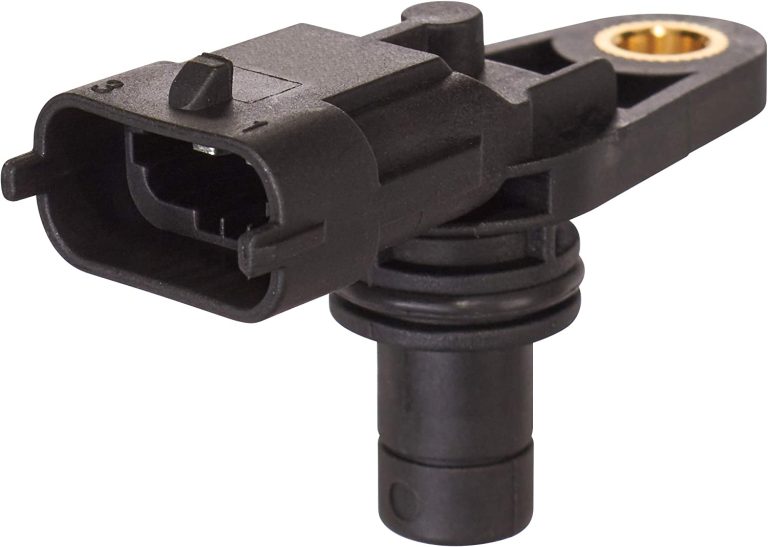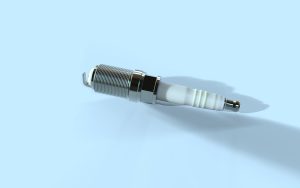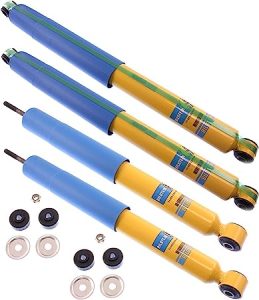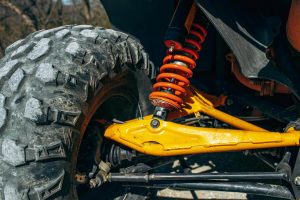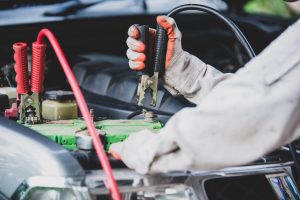After replacing the crankshaft sensor on your vehicle, following additional steps to confirm proper functionality is essential. This article will outline what to do after replacing crankshaft sensor. This includes checking for loose connections, resetting related computer codes, and testing the system after installation. These steps can help ensure your new crankshaft sensor functions correctly and keeps your car running smoothly.
After replacing the crankshaft sensor, it is essential to double-check the wiring connections and clear any fault codes. If any fault codes remain, further diagnostic tests may be needed. Additionally, the vehicle should be test-driven to ensure the new sensor works correctly. Hope you find your answer about what to do after replacing crankshaft sensor
After testing, all parts replaced in the repair process should be inspected for signs of damage or wear. Finally, if applicable, any fluids spilt during the replacement process should be cleaned before returning the car to its owner. These steps will help ensure a successful repair job and keep your customers safe on the roads.
Table of Contents
ToggleConfirming bad crankshaft sensor
The first step to confirming a bad crankshaft sensor is checking for fault codes. These will indicate if the sensor is malfunctioning and where the problem might be. It can also point you toward what other diagnostic tests may need to be done. Additionally, visual inspections should be performed on all electrical components associated with the crankshaft sensor. This includes checking wiring, connectors, and terminals for signs of corrosion or damage. Anything that appears out of order should be replaced before replacing the crankshaft sensor itself.
When a crankshaft sensor is malfunctioning, it will typically trigger a variety of diagnostic trouble codes (DTCs). These codes are specific to each vehicle’s make and model, so checking your car’s service manual is important. Common DTCs include P0300 (random misfire), P0335 (crankshaft position sensor.
A circuit malfunction), and P0340 (camshaft position sensor A circuit malfunction). It is also possible for other codes to be triggered if the issue has spread further than just the crankshaft sensor. Before replacing any components, it is essential to conduct comprehensive testing as the results may differ depending on the vehicle.
Installing New crankshaft sensor
When you have verified that the crankshaft sensor is defective, it’s necessary to replace it with a new one. The first step is removing any fasteners or covers surrounding the component. It is important to note the pins used, as they must be replaced when reassembling. Once exposed, the part can be unplugged from its electrical connectors and removed completely.
Step-by-step Detailed Installation of Crankshaft Sensor
- Disconnect the negative battery cable to ensure the safety of both mechanics and the vehicle being worked on.
- Locate the crankshaft position sensor and remove any connected components, such as wiring or brackets. Make sure to note where each part is located for easy reinstallation later on.
- Unplug the electrical connector from the crankshaft sensor, then use a wrench to loosen and remove its mounting bolts or screws.
- Carefully lift out the old sensor, taking care not to damage any other components in its vicinity as it is removed.
- Install the new crankshaft position sensor into place with its mounting bolts or screws. Use torque-rated screws or bolts to help ensure a secure connection.
- Plug the electrical connector into the new sensor and reconnect any removed components.
- Reconnect the negative battery cable and test drive the vehicle to check for proper operation of the crankshaft sensor.
- Double-check all wiring connections and clear any remaining fault codes if they are present before returning the car to its owner.
These steps should be followed when replacing a crankshaft position sensor to ensure a successful repair job and keep you and your vehicle safe on the roads.

Resetting crankshaft sensor
The car may require resetting the crankshaft sensor after it has been replaced for it to run correctly. Resetting the sensor will allow it to “learn” its new position and calibrate itself accordingly. Before doing anything, it’s best to consult the service manual or talk to a technician since the process can differ depending on the vehicle. In most cases, this involves connecting a diagnostic scan tool capable of performing engine control unit (ECU) programming and resetting the crankshaft sensor as instructed by the manufacturer.
Once this is done, turning on the ignition switch should trigger the ECU and initiate the learning procedure. The process will be complete once you have driven for a few minutes, and you can start using the vehicle.
Crankshaft sensor relearning using scanner step by step
- Connect the scan tool to the vehicle and enter it into the engine control unit (ECU) programming menu.
- Select “Reset crankshaft position sensor” from the list of available options and follow any on-screen instructions that may be given by the tool.
- To complete the ECU’s relearning process, start the engine and allow it to idle for a few minutes.
- Turn off the ignition switch and disconnect the scan tool from the vehicle’s diagnostic port when finished.
- Test the car to check for proper operation of all systems, including a smooth idle and good acceleration response.
Also Read: Temporary Fix for Bad Piston Rings
How to Reset the Crankshaft Position Sensor Manually
The Crankshaft Position Sensor (CPS) is a crucial ignition system component in most modern engines. When it fails, the engine won’t start at all. Usually, resetting the CPS will solve this problem and get your car running again. Here’s a step-by-step guide on how to manually reset the CPS:
- Start by disconnecting the negative battery cable from the terminal post. This will ensure you don’t accidentally short out any electrical components during the procedure.
- Locate the Crankshaft Position Sensor (CPS). It is usually found near or at the front of your engine block.
- Disconnect the sensor from its wiring harness and remove it from the engine.
- Inspect the sensor for any dirt or debris that may have accumulated on its surface, and clean them away using a soft brush if necessary.
- Take note of the orientation of the CPS when you remove it from the engine (you’ll need this information later).
- Reinstall the CPS back into its original position and securely connect it to its wiring harness.
- Reconnect the negative battery cable and start your vehicle to see if resetting the CPS solved your issue. If not, you may need to consult a professional mechanic for further assistance.

Problems after replacing the crankshaft position sensor
Poor Engine Performance
If the crankshaft position sensor is incorrectly installed or malfunctioning, it will cause poor engine performance and possibly a loss of power. This can result in slower acceleration, reduced fuel economy, and higher emissions.
Stalling Engine
A faulty crankshaft position sensor may cause misfires, leading to intermittent engine stalling during idle or low-speed operation.
Difficulty Starting
The CPS sends information about the timing and frequency of your engine’s combustion cycle to the vehicle’s computer, so if it is not functioning correctly, you might have difficulty starting your car—especially after extended periods of non-use (like weeks or months).
Unusual Noises
A faulty crankshaft position sensor can cause a variety of strange noises, including knocks and rattles coming from the engine bay. This is usually caused by excessive vibration or misfiring in the engine.
Check Engine Light On
If your CPS malfunctions, it will often trigger a check engine light on your dashboard. This signal should be taken seriously as it may indicate a problem with your vehicle’s drivetrain or emissions system.
Engine Misfire Codes
When you get an error code related to an engine misfire after replacing the crankshaft position sensor, it could mean something wrong with the installation or the sensor is defective. Getting your vehicle inspected as soon as possible in either situation is important.
Unusual Steering Response
Another symptom of a faulty crankshaft position sensor is an unusual steering response when you make sharp turns or acceleration and deceleration manoeuvres. This can be caused by the sensor sending incorrect information to the vehicle’s computer, leading to jerky steering movements and sudden changes in direction.
Abnormal Fuel Consumption
If the crankshaft position sensor isn’t functioning correctly, this can cause abnormal fuel consumption as the engine will no longer run efficiently. With an inefficient combustion cycle, more fuel is used for each stroke, leading to lower gas mileage.
To prevent issues, make sure that you install the crankshaft position sensor correctly and properly. If you notice any of the issues mentioned above with your vehicle, it is advised to get it inspected promptly by a skilled technician.
Symptoms of bad crankshaft position sensor
Engine misfires
When the crankshaft position sensor stops working properly, the engine may misfire or run inconsistently because it’s responsible for tracking the position and speed of the crankshaft.
Poor idle quality
Poor quality is another bad crankshaft position sensor symptom. This could be indicated by stalling, rough idling, or inconsistent RPMs while idling.
Hard starting
If your vehicle has difficulty starting or takes longer than usual, this could also indicate an issue with the crankshaft position sensor.
Reduced fuel efficiency
Faulty Crank sensors may lead to reduced fuel efficiency due to the computer not sending the correct fuel-air mixture to the engine.
Check Engine Light
If your check engine light is on or blinking, this could indicate an issue with your crankshaft position sensor. It’s best to take your vehicle for a diagnostic test as soon as possible.
Erratic transmission shifting
The crankshaft position sensor also helps control the timing of automatic transmissions. If it fails, it can cause erratic shifting and even prevent you from entering certain gears.
Stalling
This is one of the most common symptoms of a bad crankshaft position sensor, as an incorrect reading from the crank will cause your engine to stall randomly. It’s important to note that other issues, such as a dirty air filter or a failing fuel pump could cause this.
Difficulty accelerating
Another symptom of a crankshaft position sensor going bad is difficulty accelerating. If the crankshaft speed is not measured correctly by the crank sensor, your engine may not be able to accelerate properly and might struggle. This may also cause stalling or result in poor fuel economy in some situations.
No start condition
An issue with your crankshaft position sensor may prevent your vehicle from starting altogether. This is because if the computer cannot get an accurate reading from the crank, it will not be able to start the engine correctly.

The car won’t start after replacing the crankshaft position sensor
If you have replaced the crankshaft position sensor and your car still doesn’t start, it could be faulty wiring or a defective part. Carefully inspect the wiring harness for any signs of damage or corrosion. Please ensure that all connections are securely attached and none of the connectors have any dirt or debris buildup. If there are no apparent issues, replace the crankshaft position sensor with another new one.
Another underlying issue is preventing your car from starting, such as a problem with the fuel system, ignition system, battery, or starter motor. Have these components inspected by a qualified mechanic to diagnose and repair the cause of your starting problem?
Frequently Asked Questions
Can I drive with a faulty crankshaft sensor?
No, it is not recommended to drive with a faulty crankshaft sensor. If the crankshaft sensor fails or malfunctions, your engine cannot accurately determine when to start and stop firing cylinders. This could cause your vehicle to stall or run poorly, increasing wear and tear on other engine components.
Driving under such conditions could increase the possibility of getting into an accident. We recommend that your car’s crankshaft sensor be repaired immediately for safety reasons. If the problem persists after repair, we suggest having a professional mechanic diagnose and replace the faulty part. Doing so may prevent further damage and costly repairs down the line.
Can a faulty crankshaft sensor cause other engine problems?
Yes, a faulty crankshaft sensor can cause other engine problems. When the crankshaft sensor malfunctions, incorrect signals will be sent to the car’s fuel and ignition timing control computer. This can result in misfires, stalling, poor acceleration, rough running, and reduced gas mileage.
Additionally, suppose the car’s computer doesn’t receive proper signals from the crankshaft sensor. In that case, it may run too rich or lean, causing damage to other components such as spark plugs and catalytic converters. Therefore, instantly replacing a faulty crankshaft sensor is important to avoid more severe issues.
How long does a crankshaft sensor last?
The life expectancy of a crankshaft sensor can vary. Many factory-installed sensors are expected to last around 100,000 miles. The lifespan of a part can vary due to factors like the part’s quality, maintenance practices, and environmental conditions. A crankshaft sensor in good condition should last longer than one that has undergone repeated heat cycles or vibration due to faulty installation or rough terrain.
Additionally, some automotive systems require more frequent replacement of their sensors due to extended use and higher temperatures. In the end, it’s recommended that you refer to your owner’s manual for maintenance guidelines and visit an auto shop for any needed repairs or diagnosis. With proper maintenance and care, you can ensure that your cranks.
Final Thoughts
Inspect the other components of your car’s engine system for proper functioning after replacing the crankshaft sensor. Check the spark plugs, air and fuel filters, hoses, belts, and wiring for any signs of wear or damage.It is important to address any issues with these components before starting your car. Furthermore, test the new crankshaft sensor and ensure it functions properly by taking a few trips at different speeds.
Doing so will ensure that the crankshaft sensor is correctly calibrated for your car’s engine system and will help prevent further issues. You can avoid expensive repairs in the future and keep your car’s engine system running efficiently by following these measures.

